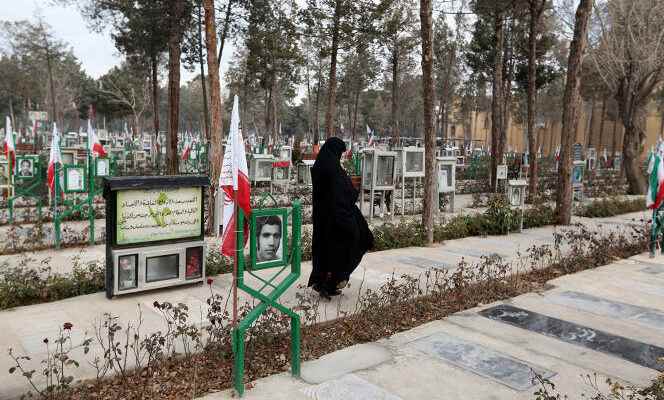Behesht-e Zahra. Zahra’s paradise. A pretty name for this huge cemetery, the largest in Iran, which begins at the gates of the southern districts of Tehran and extends over more than 580 hectares towards the desert. Its name is a tribute to the daughter of the Prophet. On his return from exile, the 1er February 1979, it was the first place visited by the founder of the Islamic Republic, Ayatollah Ruhollah Khomeini, consecrating it as one of the high places of the Islamic revolution.
His mausoleum is also on the other side of the long avenue that leads to it. The building that hosts it is heavy and pretentious. Better to walk the peaceful, shady alleys of the cemetery, where you can breathe better than in Tehran, a city where traffic jams are grueling – public transport is miserable – and pollution so oppressive that it makes the top invisible Alborz massif which dominates the Iranian capital. During the week, the silence is so beautiful there.
A secret funeral
Tragedy is never far away. On December 9, Mohsen Shekari was buried there the day after his hanging after a trial that flouted all the rules of justice. He is the first person sentenced to death to have been executed since the beginning of the demonstrations. The 23-year-old was accused of stabbing a militiaman during a clash with security forces. His funeral took place on the sly.
At the heart of the cemetery is a perimeter considered sacred: the square of the martyrs. It welcomes those who were mowed down by the bullets of the Shah’s army during the 1978-1979 revolution and the fighters killed during the long Iran-Iraq war (1980-1988) without forgetting those who fell in the attacks perpetrated by organizations hostile to the new power.
There are at least 30,000 graves in this square. On some, only one mention: “Unknown Martyr. » But, even if they gave their life fighting against the Shah, the Islamic Republic excluded from the quality of shahid (martyr) far-left activists, who therefore could not be buried there. Often the authorities did not even give their families any space, forcing them to bury them in more distant cemeteries.
After the Islamic revolution and during the war, the sacred square was more frequented than today. Families came in large numbers on Friday to picnic on the graves. Wives and mothers wrote letters to the deceased there and sometimes addressed them directly: “Martyr, my martyr, speak to me. » At present, apart from a few old mothers who clean the tomb of a son, perfume it with rose water and recite the consecrated surah, the square of the martyrs, apart from the commemoration ceremonies, is deserted.
You have 50.43% of this article left to read. The following is for subscribers only.
